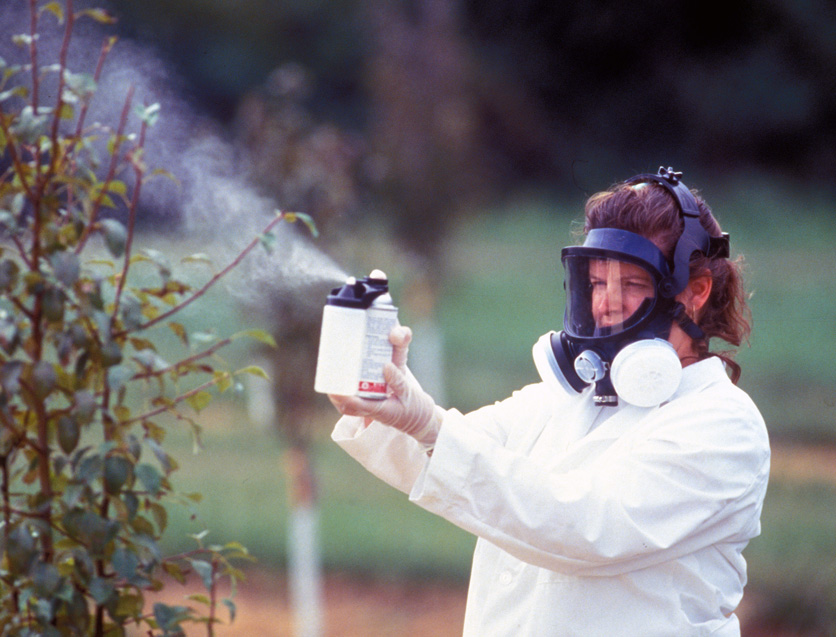The California Environmental Protection Agency (CalEPA) announced today that the Department of Pesticide Regulation (DPR) is acting to ban the use of chlorpyrifos in California by initiating cancellation of the pesticide. The move comes as state lawmakers were considering Senate Bill 458 by Sen. Maria Elena Durazo, D-Los Angeles, which would completely ban the broad-spectrum insecticide in the state.
Last week, the New York State legislature passed a total ban on chlorpyrifos. Hawaii was the first state to pass a full ban last year. Similar actions are under consideration in Oregon and Connecticut to do the same.
The decision was "incredibly disappointing" for California Citrus Mutual (CCM) President Casey Creamer. CCM was involved from the beginning with DPR's scientific review process.
"There was numerous overestimation of the risks and an exaggeration of the actual use, which wasn't based on sound science," Creamer told Agri-Pulse. "It was overly conservative. The outcome today of what they're deciding goes even further beyond what that process identified."
He said the decision affects the survival of the California citrus industry. The citrus disease Huanglongbing has been "wiping out the Florida citrus industry," is present in Texas and is now at the doorstep of residential areas in Southern California. Chlorpyrifos was an important tool for this within the integrated pest management toolbox. The decision will have a chilling effect on agricultural companies looking to invest in California, he said. With fewer tools for farmers, "it just slowly kills this industry." He said the proposed budget funding would not offset that cost.
Creamer suggested a decision this significant would likely come from Governor Newsom directly.
California Farm Bureau Federation President Jamie Johansson also responded to the CalEPA decision.
“There will be trade-offs from cancellation of any pesticide," Johansson said in a statement. "Food may become more expensive and California-grown food less plentiful. That would leave our state’s residents dependent on food grown elsewhere — and not grown under the stringent rules California farmers follow."
Chlorpyrifos is widely used by farmers to kill pests on more than 50 crops.
Last month, the 9th Circuit Court of Appeals issued a three-paragraph order giving the Environmental Protection Agency until mid-July to respond to objections from farmworker and environmental groups to EPA's 2017 decision permitting continued use of the insecticide.

CalEPA Secretary Jared Blumenfeld
“For some crops and target pests, chlorpyrifos is the only line of defense, with no viable alternatives,” Agriculture Secretary Sonny Perdue said in September when EPA asked the appeals court to rehear the case. Losing the use of chlorpyrifos “endangers agricultural industries and is expected to have wide economic impacts.”
DPR said it will consult with county agricultural commissioners and local air pollution control districts before filing for cancellation. The cancellation process could take up to two years.
CalEPA and the California Department of Food and Agriculture (CDFA) also announced that Gov. Gavin Newsom will propose $5.7 million in new funding in the May Revision budget proposal to support the transition to “safer, more sustainable alternatives, and plans to convene a working group to identify, evaluate and recommend alternative pest management solutions.”
“California’s action to cancel the registration of chlorpyrifos is needed to prevent the significant harm this pesticide causes children, farm workers and vulnerable communities,” said CalEPA Secretary Jared Blumenfeld. “This action also represents a historic opportunity for California to develop a new framework for alternative pest management practices.”
In a release, DPR said the decision to ban chlorpyrifos follows mounting evidence, including recent findings by the state’s independent Scientific Review Panel on Toxic Air Contaminants, that the pesticide causes serious health effects in children and other sensitive populations at lower levels of exposure than previously understood. These effects include impaired brain and neurological development.
In April, chlorpyrifos was formally listed as a “toxic air contaminant,” which California law defines as “an air pollutant which may cause or contribute to an increase in mortality or an increase in serious illness, or which may pose a present or potential hazard to human health.” The listing requires DPR to develop control measures to protect the health of farm workers and others living and working near where the pesticide is used.
DPR has determined, in consultation with CDFA, the Office of Environmental Health Hazard Assessment, and the California Air Resources Board, that sufficient additional control measures are not feasible.
In addition, DPR plans to convene a cross-sector working group to identify safer alternatives to avoid replacing chlorpyrifos with an equally harmful pesticide. This will include the use of biological controls and other integrated pest management practices. They will also partner with growers as they transition from using chlorpyrifos to implement safer alternatives, according to DPR officials.
During the cancellation process, DPR’s recommendations to county agricultural commissioners for tighter permit restrictions on the use of chlorpyrifos will remain in place. These include a ban on aerial spraying, quarter-mile buffer zones and limiting use to crop-pest combinations that lack alternatives. DPR will support aggressive enforcement of these restrictions.
“We look forward to working with the Legislature through the budget process on the Governor’s proposal to support growers in the transition to alternative pest management,” said CDFA Secretary Karen Ross.
In 2015, DPR designated chlorpyrifos as a “restricted material” that requires a permit from the county agricultural commissioner for its application. In addition, applications of chlorpyrifos must be recommended by a licensed pest control adviser and supervised by a licensed certified applicator.
The proposed cancellation would apply to dozens of agricultural products containing the pesticide. The pesticide has been prohibited by the U.S. Environmental Protection Agency for residential uses since 2001.
Chlorpyrifos is used to control pests on a variety of crops, including alfalfa, almonds, citrus, cotton, grapes and walnuts. It has declined in use over the past decade as California growers have shifted to other alternatives. Use of the pesticide dropped more than 50 percent from two million pounds in 2005 to just over 900,000 pounds in 2016.
The five main manufacturers of chlorpyrifos include Dow AgroSciences (Corteva Agriscience), Cheminova, Makteshim-Agan, Garda and Platte Chemical.



